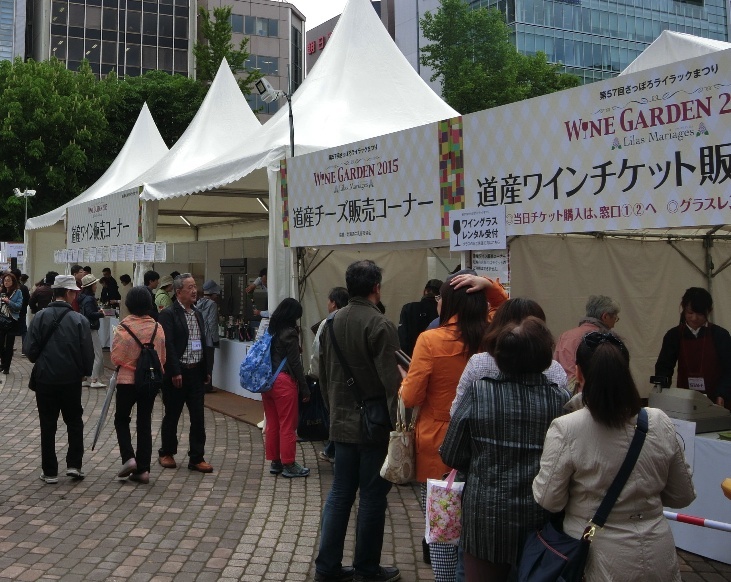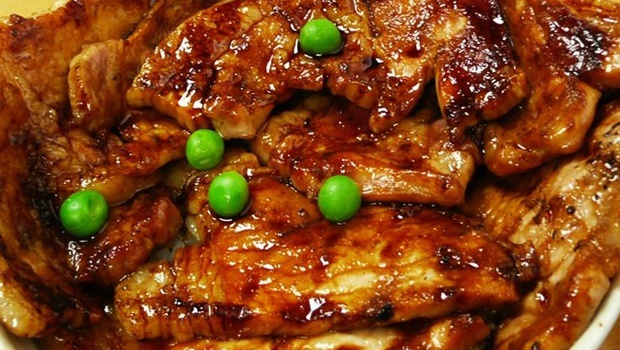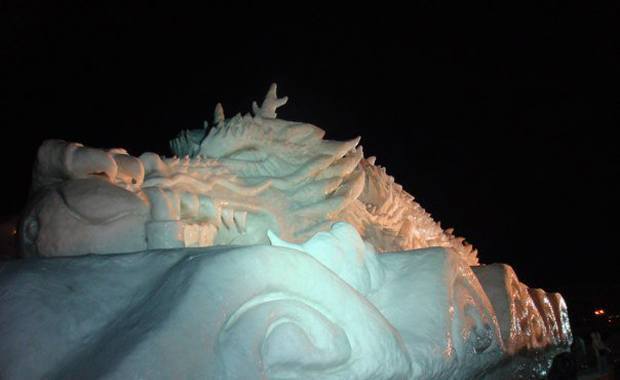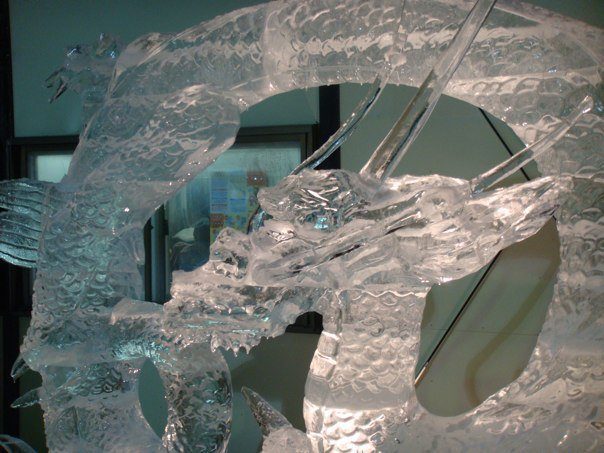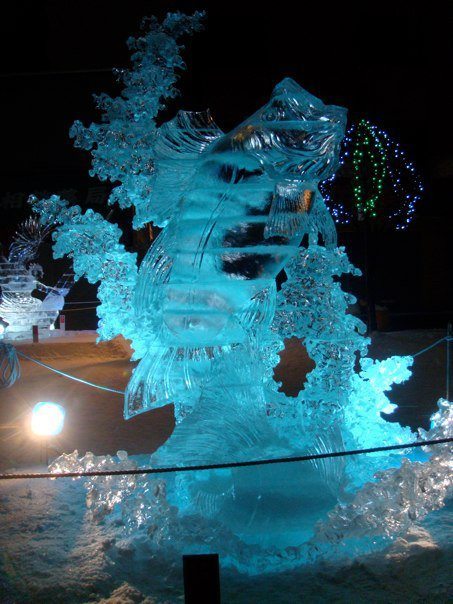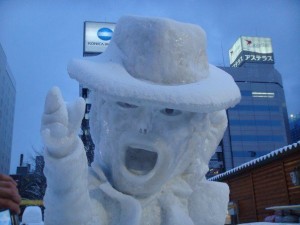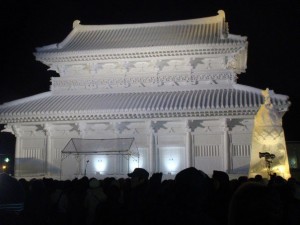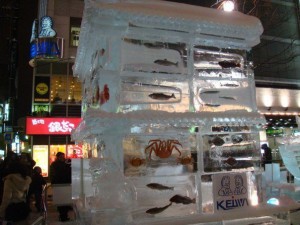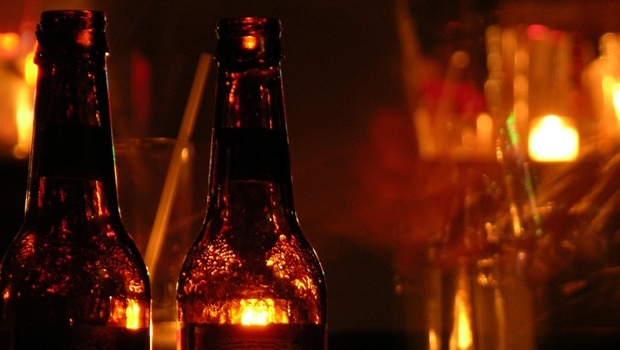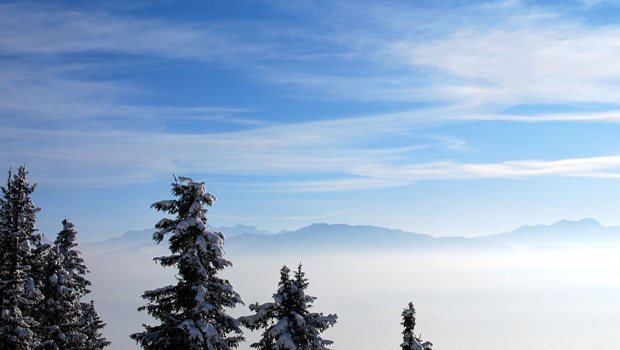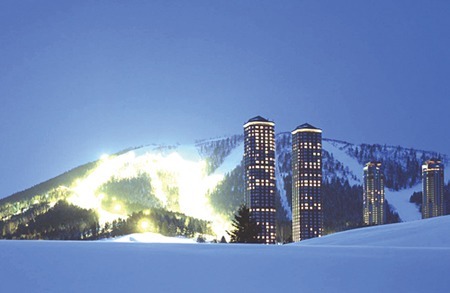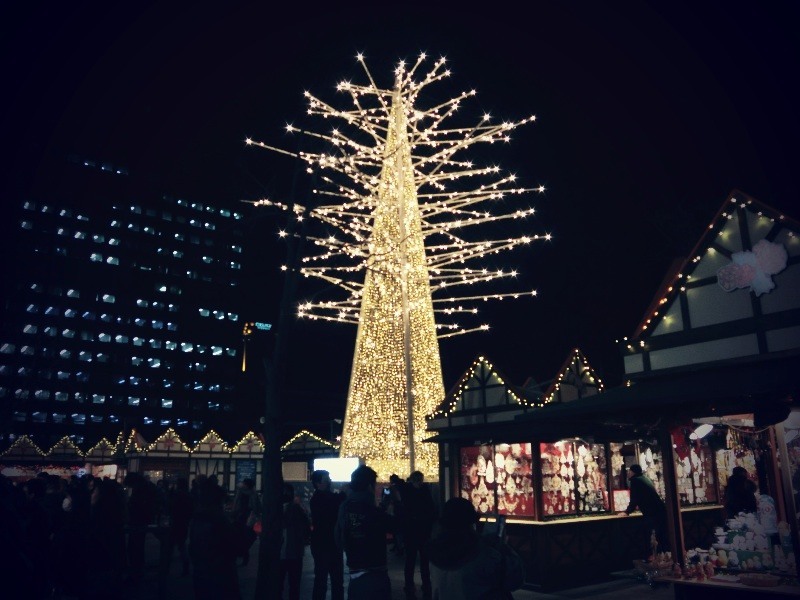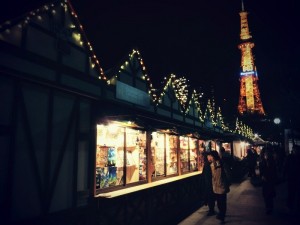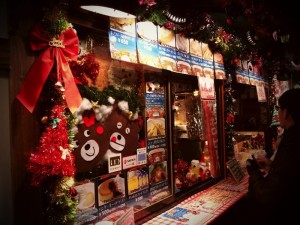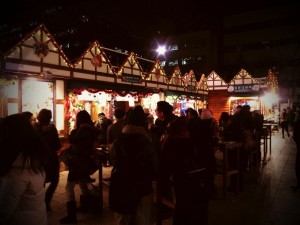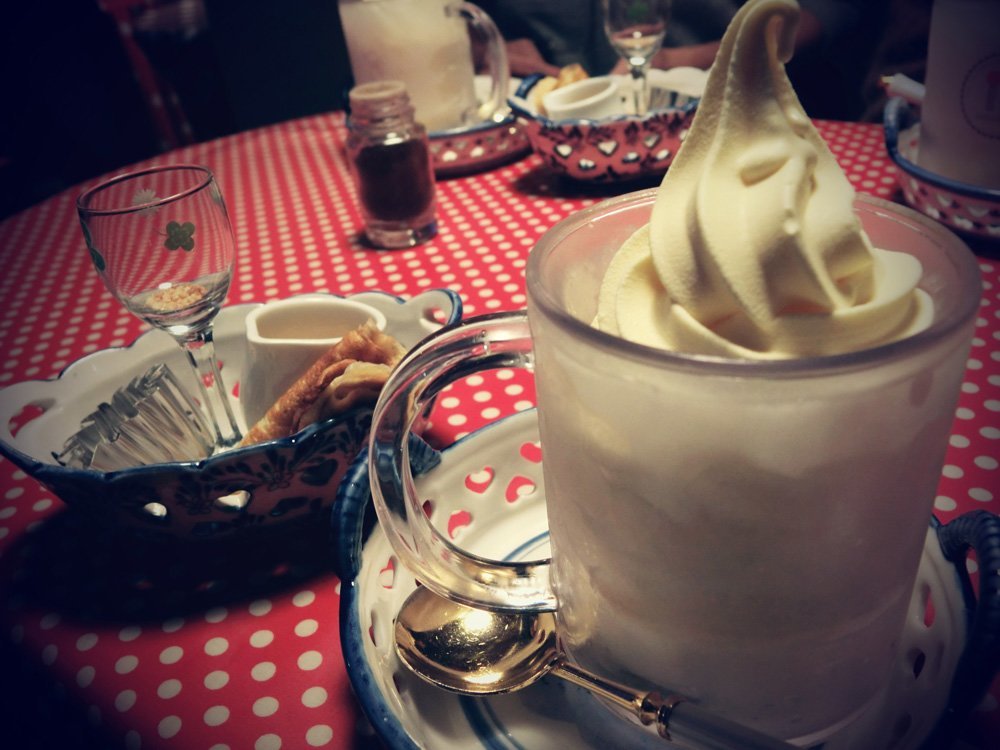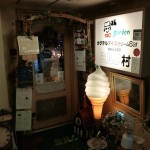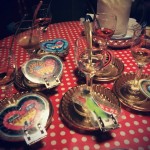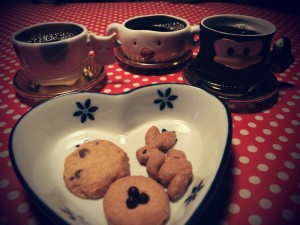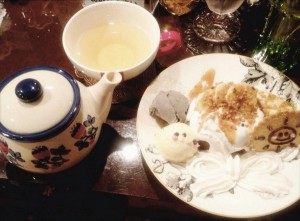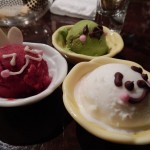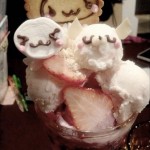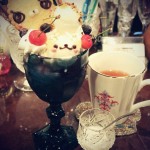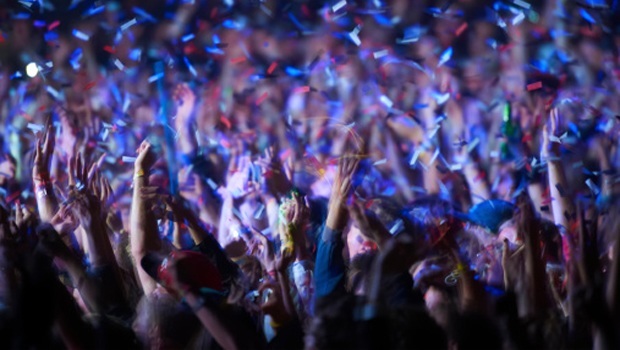If you live in New York, London, Paris, Chipping Sodbury or countless other places scattered over the earth’s surface then Obihiro is probably at best, a place, in a country. If you live in Japan it’s a place, up north and if you live in Hokkaido then it’s normally, but not always, a place, out east with slow horses and great fireworks. You’d be about right as well. There’re no real landmarks of renown either man made or natural. In tourism terms it is overshadowed by the more photogenic Tokachi plain and Daisetsusan national park. The nearest ski resort worthy of the name is Sahoro and that’s a bit, well, we’ll save that for another time. But there are some great little bits to the city, many of them culinary. There’re a few streets that have these tiny one room restaurants which are always packed but look fantastic from the cheap seats. There’s fresh produce a plenty owing to the almost embarrassingly fertile and productive farmland in the area. But, if there’s one food which is synonymous with Obihiro it would have to be 豚丼 – butadon.
For those who don’t know, butadon is Obihiro’s fish and chips, pies and mash, poutine and beer, coffee and doughnuts. It’s a bowl of rice with some sliced pork which was cooked in a sauce of varying degrees of sweetness layered very neatly over the top. Sounds simple you say; it is, all great things are, well fire and the wheel were. So, I have made it my mission to A: pretend I know loads about food, B: pretend I know where all the best butadon places in the city are and C: eat loads of it in some odd, half arsed homage to that film that bloke made about eating McDonalds every day. Here we go.
#1 Kakashi
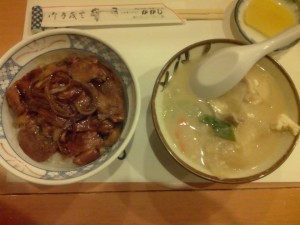

The first restaurant I visited was a small place called かかし (Kakashi). The restaurant is in the main entertainment district at Nishi 2 Jo Minami, 10 Chome-20-7. It is run by a group of very sweet ladies and as such you could carry out an impromptu Mary Poppins style dust check in any nook, cranny or crevice and the silk glove would come back even whiter than when it went a searching. This place is clean. Being run by a group of women of a slightly advanced age means that certain items are guaranteed. Plastic floral arrangements, odd bits of paraphernalia which no-one seems to know about and chopstick holders with little messages welcoming you to the shop on them are all to be found in tasteful scarcity. I’m just saying, you don’t get these things at a truckers’ café, so, onto the butadon.
I opted for the meal set which came with yellow daikon (big radish) and tonjiru (pork soup) soup. The sauce had a very heavy caramelised onion flavour to it and the meat was well done, nice and tender. The sauce gladly wasn’t too heavy on the salt. The rice was all light and fluffy and it went down rather well. The tonjiru on its own would have been fantastic enough, so get the set.
#2 Nameless

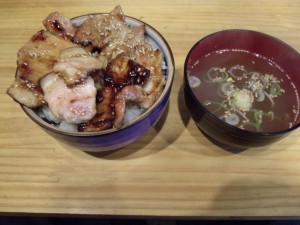
I went to the second place on a cold Friday afternoon for a late lunch. It didn’t seem to have a name, just loads of signs for butadon and ramen (noodle soup) outside. It is just down the road from the station with the alluring address of Nishi 2 Jominami, 10 Chome-20. This place can be described in one word: bloke! Manly, masculine or any other some such gender specific word wouldn’t even come close. This place, by Japanese standards goes beyond such petty descriptions. It has got bloke pouring out of its sweaty little pores. It’s as close as I’ve been to a greasy spoon in Japan.
First thing first, the pub is next door. Next thing next, even though it was quiet when I went all the ashtrays managed to have been used. There were bags of food on the bar, the chap that owns it didn’t seem best pleased about having to serve someone. All in all it’s a bit raggedy. None of these things are criticisms I’m a huge fan of spit and sawdust. The price is decent, with the rice bowl and some stock which is classed as soup for 800 yen. It’s quick too, worryingly quick. I walked in, ordered, jotted down some initial observations and bam! bowl of rice and some pig on my table. It doesn’t do fancy crockery and frilly bits neither.
Taste wise, well, the stock tastes like stock with a bit of leek chopped in it, so that’s fine. The main attraction isn’t great though. The sauce tastes of bottle, the colour of the bottle I can’t be sure of but it definitely had that processed flavour about it. The meat was very fatty and not in a good way it also had ominous shades of pink in it. The rice tasted like the stuff that comes out of my rice cooker when I can’t be bothered to wash it first, which is frequently. So all in all, apart from the price and the pub being next door it didn’t have a lot going for it, but that could just be me being a snob.
#3 Butaichi
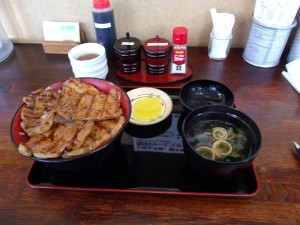
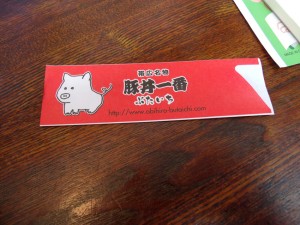
The next place on the list was called ぶたいち (Butaichi). It’s out on route 151 on the same side and just after Bikkuri Donkey as you are going out of town. It has got a yellowy franchise feel to it from the outside. This was confirmed when I went in to be faced with one of those ticket machines which dispense your lunch voucher. I panicked and I’m not ashamed to admit it. The choice was too much. My kanji (Chinese character) brain, which isn’t great at the best of times collapsed and I just pressed the first thing I saw with the butadon kanji on it. It was all a bit of a farce, there were coins falling out of my wallet and being chased around by the young lady who stood next to the machine, ready to pointlessly take my ticket and shout its contents to the man who was behind the counter. If I had taken a bit of time I might have found some unique dish special to the restaurant but as it was I ended up with the standard set of butadon, soup and pickled yellow things. If you are a better human than me, stand at the machine and take a moment, I’m sure there’ll be something for you. Anyway, all the things at the seating counter have sticky labels on them, like when you were at primary school so you know what to do with what. There are a few piccys hanging up but apart from that it’s all Nitori (Japanese Ikea) dining sets and sanitisation. It feels new, even smells a bit new, like it needs a group of drunken people in there to dirty it up a little. There is also an eerie sense of Germanic efficiency. I get ticket, give girl ticket, girl shouts ticket contents, man shouts order, chef makes order, chef gives to man, man gives to girl, girl gives to me, no jokes, no slip ups just smooth as like start to finish. Price and size are decent. The machine starts at about 700 yen and ends up somewhere around the 1,500 yen mark for something with all the trimmings.
The rice was good and tasted like it had been cooked over a flame as opposed to coming from a cooker, which I sincerely approve of. The meat was well cooked, no blood this time. The sauce had a nice peppery taste but again was overwhelmed slightly by the salty taste of packet. I got caught taking notes by the man that runs it and couldn’t even use the idiot foreigner excuse as he spoke perfect English, I panicked again, gochisosamadeshita’d and ran away. All things considered, it was rather good (gochisosamadeshita is something said after a delicious meal).
#4 Men
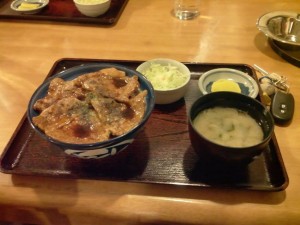
The penultimate stop on this culinary tour was at a restaurant called めん (men). It’s on route 38 which is the main thoroughfare for Obihiro, on junction 22 west. It’s on the left as you are going out of town and make sure you are going out of town if you decide to stop there as if you are coming into town it’s a misery to get to.
First impression, well, my first impression was that it smelled of cats. If you like cats and/or are an old widow who knits of an afternoon then it’s a good thing, otherwise not so much. This cat theme was cemented by the heavy presence of feline paintings decorating the walls. It’s got a touch of the 80’s about it as well. There was an oval breakfast bar style counter encircling the kitchen. It is apparently just for decoration though as my friend and I went to sit there and we were very quickly ushered away to an apparently more appropriate location. It’s quite tough to describe as a place. It feels as if it may have been designed and upholstered over a period spanning generations, much like a cathedral or catacombs. There is an old school family restaurant at the back, the aforementioned breakfast bar in the middle and present day consideration given over to stuff to keep the kids amused with a little toddlers play area at the far end.
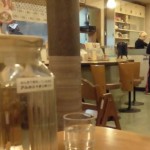
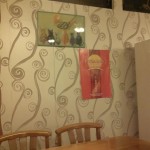
Food was ordered at a respectable 820 yen and came with the addition of a little bowl of salad containing a slightly suspicious looking dressing. The meat was fine. The sauce had clearly been made in house as you could taste a lot of fresh herbs in it but it is possible that the chef’s mate jogged the chef’s elbow when pouring in the soy sauce as it was quite strong in that department. Rice was light and the soup, of the miso variety whilst not being standout was good enough for an accompanying side dish. The menu has all sorts of fun little combos. You can have a mini butadon with ramen or a mini ramen with butadon or a mini this and large that with a midi other. But my lingering memory of the place is mainly just cats.
#5 Matsunaga
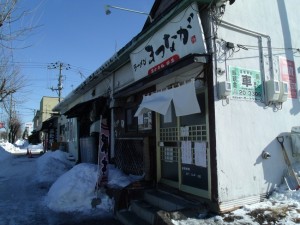
And so, to the last place on my odyssey of pork in a bowl. This restaurant is to the east of Odori at south 15 – east 6 which is normally a no go area for me. It’s a bit like living in London and not crossing the river. Anyway, there is a large shopping complex nearby, ignore that and on the same side of the road just past it there’s a small shop called まつなが (Matsunaga).
From the outside it looks like a right old fashioned affair so I conjured up images of tatamis and low tables before entering. Turns out this café was stolen from some place in Devon that normally sells cream teas to family holiday groups. It has even got floral patterned plastic table cloths in case the kids spill their fizzy pop. It is clearly a family run place as mum seems to be doing the cooking whilst the now adult children run the place. It looks like they don’t get out much though as all the framed pictures hanging off the walls are of menu items.
I ordered the standard set of soup, and yellow bits for 800 yen. In truth I wasn’t expecting too much; shows what I know. It leaves all the others apart from Kakashi in its tasty wake. The butadon comes in something ceramic and substantial which is a good start. Secondly there is attention to detail, the pork is presented as a very ornate and meaty spiral staircase, think lady gaga does interior design. Finally, whilst the meat is cooked, very decently too I might add in your standard butadon sauce there is a little side pot of the sauce so you can flavour your meal to taste, it’s the little touches isn’t it. To my eternal shame I took a picture of the outside to be greeted by a dead battery notification straight after and so was not able to record just how pretty the butadon was. Go there, but be careful not to go into the large chain one which is about two doors down in the shopping centre.
And so, there we have it, five places to get you started should you ever wish to dine solely on butadon for a few days. In truth there are a whole plethora of butadon restaurants in Obihiro. I have no idea if the ones I picked were already famous, already infamous or on some health and safety watchdog list. They were just the places that I went to, all have their qualities and their drawbacks which is as far as I can make out is half the charm of going to small unknown entities. Bon appetit.
